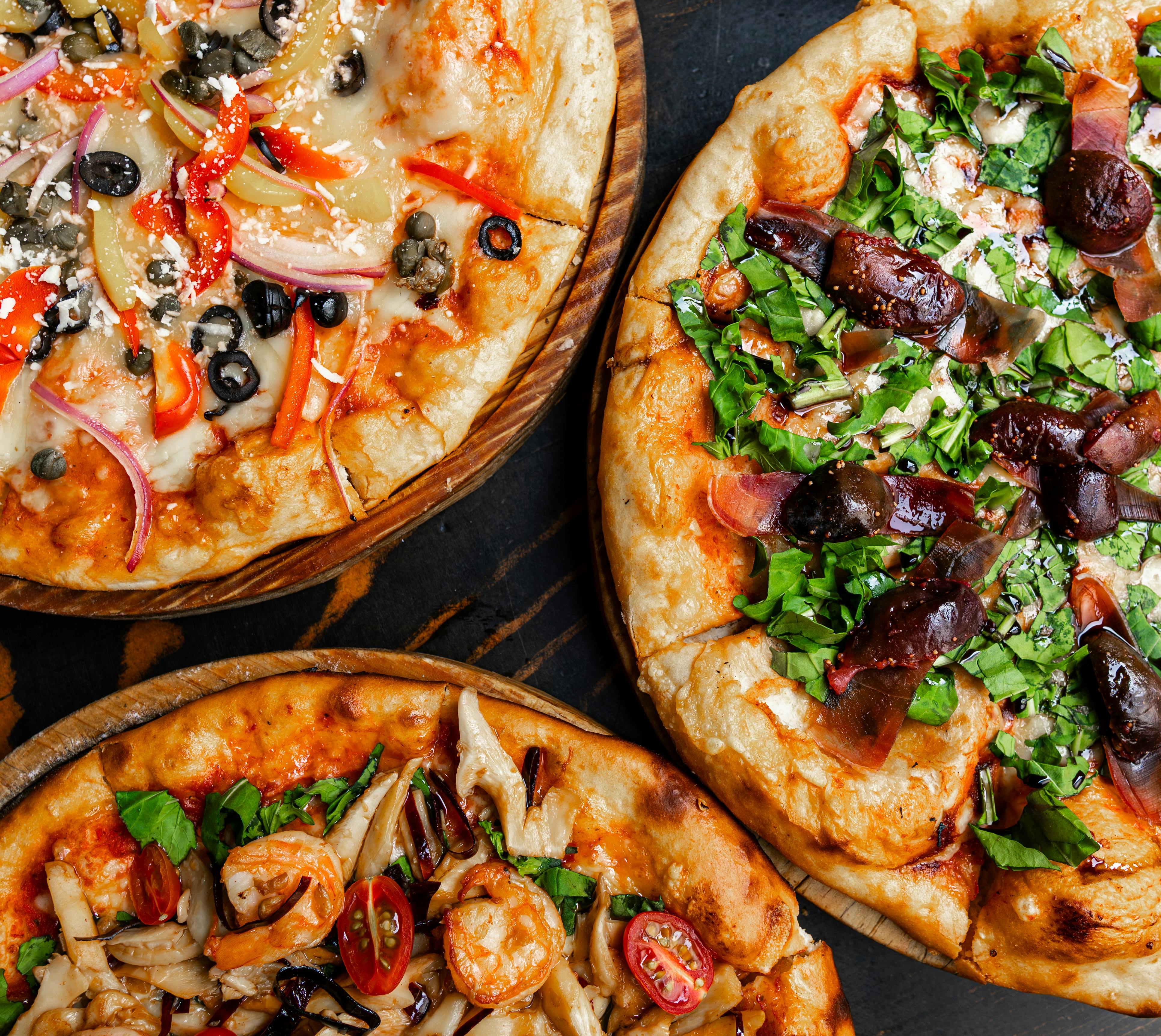Are you ready to embark on a flavorful journey through the streets of India? We invite you to unleash your creativity and share your healthy twist on a traditional dish that has captivated taste buds for generations. Explore the vibrant spices, savor the unique flavors, and infuse your personal touch into a dish that embodies the essence of Indian street food. Whether you choose to reinvent a beloved favorite or introduce a brand new creation, this challenge is an opportunity to celebrate the culinary treasures of India in a way that honors your commitment to healthy living. So gather your ingredients, let your imagination run wild, and prepare to share your deliciously innovative take on a classic Indian street dish.
Overview
Indian street food is a vibrant and diverse culinary tradition that has gained popularity around the world. From the savory samosas to the spicy pav bhaji, these delicious snacks offer a burst of flavors and textures that are hard to resist. However, many traditional Indian street foods are deep-fried and loaded with unhealthy fats and excessive sodium, making them a less than ideal choice for those looking to maintain a healthy diet. In this article, we will explore the importance of healthy street food and the challenges of making traditional dishes healthier. We will also delve into various strategies for incorporating nutritious ingredients, cooking methods that reduce the need for excessive oil, and ways to modify popular street foods to make them more wholesome. Lastly, we will discuss the significance of street food safety and the importance of finding a balance between health and authenticity.
What is Indian street food?
Indian street food refers to a wide variety of snacks and small meals that are sold by vendors on the streets and in local markets across India. These dishes are affordable, convenient, and often bursting with flavors. They offer a glimpse into the diverse culinary traditions of different regions in India, each with its own unique ingredients and preparation methods. Some popular examples of Indian street food include samosas, pani puri, pav bhaji, masala dosa, and vada pav. These dishes are typically enjoyed as a quick bite on the go or as a part of a leisurely street food tour.

Importance of healthy street food
Street food holds a special place in the hearts and palates of people all over the world, and Indian street food is no exception. However, the popularity of street food is often accompanied by concerns about its impact on health. Many traditional street foods are deep-fried, high in unhealthy fats and calories, and may not provide the necessary nutrients for a balanced diet. As more people seek to adopt healthier eating habits, it becomes crucial to find ways to enjoy the flavors and experiences of street food while making mindful choices that promote overall well-being. By opting for healthier versions of Indian street food, we can still indulge in our favorite snacks guilt-free.
Challenges of making traditional street food healthier
Modifying traditional street foods to make them healthier is not without its challenges. Street food vendors have perfected their recipes over years, and any attempt to change their beloved dishes may be met with resistance. Additionally, finding alternative ingredients and cooking methods that do not compromise on taste and flavor can be a daunting task. However, with some creativity and experimentation, it is possible to make substantial improvements to the nutritional profile of traditional street foods without losing the essence of what makes them so delicious.

Choosing Nutritious Ingredients
Incorporating whole grains, lean protein sources, and a variety of vegetables is a great way to make Indian street food healthier while still maintaining its deliciousness. Whole grains such as brown rice, whole wheat flour, and millets can replace refined flours in dishes like dosas and bread rolls, adding more fiber and essential nutrients. Choosing lean protein sources like tofu, legumes, and lean meats instead of fatty meats can reduce the calorie content while still providing the necessary protein. It is also important to include a colorful array of vegetables in street food recipes, both for their nutritional value and for the added texture and flavor they bring to the dish.
Cooking Methods
Many traditional Indian street foods are deep-fried, leading to an excessive intake of unhealthy fats. However, there are various healthier cooking methods that can be employed to recreate the flavors and textures we love without the need for deep-frying. Grilling is a fantastic alternative to frying, as it imparts a smoky flavor and adds a delightful char to the food. Steaming is another excellent option, particularly for dishes like momos and idlis that traditionally require deep-frying. Steamed dishes retain more nutrients and are lower in calories. Baking can also be used to achieve a crispy texture, as is the case with baked samosas.

Spices and Flavorings
Spices play a fundamental role in Indian cuisine and are essential for creating the vibrant and distinct flavors found in street food. However, many traditional recipes rely heavily on oil and ghee for their richness and taste. By using less oil and ghee, we can reduce the overall calorie content of the dish without compromising on flavor. Opting for natural herbs and spices such as turmeric, cumin, coriander, and ginger can enhance the taste profile of street food while providing numerous health benefits. Additionally, reducing the amount of sodium used in seasoning can help in managing blood pressure and overall heart health.
Traditional Dish Modifications
While it is important to respect the authenticity of traditional street food, it is also possible to make modifications that align with our health goals. For example, a healthy version of samosa can be made by using whole wheat pastry dough and baking them instead of deep-frying. The filling can be made with a mix of vegetables and lean protein, making it a nutritious and delicious snack. Similarly, pav bhaji can be made with less oil, using a mix of mashed vegetables and whole wheat buns. Baked vada pav, instead of the usual deep-fried version, can be equally satisfying.
Region-Specific Streets Foods
Different regions in India have their own iconic street foods, and they can all be given a healthy twist. Mumbai’s famous vada pav, for instance, can be made healthier by using whole wheat buns, grilled vada (instead of fried), and a tangy and nutritious chutney made of coriander, mint, and yogurt. Pani puri, a popular street food from North India, can be enjoyed without guilt by using sprouted moong beans and flavorful, low-fat chutneys. Kolkata’s kathi rolls, traditionally made with fried parathas and heavy fillings, can be made lighter by using whole wheat wraps, grilled or sautéed fillings, and fresh vegetables.
Some Popular Indian Snacks
Masala dosa, a South Indian specialty, can be given a healthy makeover by using a whole grain batter and reducing the amount of oil used in the preparation. Chole bhature, a beloved dish from the North, can be made more wholesome by using whole wheat flour for bhature and cooking the chole with minimal oil. Aloo tikki, a favorite snack enjoyed across the country, can be made nutritious yet tasty by baking the tikkis instead of deep-frying them and using a mix of boiled potatoes and other vegetables for the filling.
Street Food Safety
When enjoying street food, it is crucial to prioritize food hygiene and safety. Street food stalls can vary in terms of cleanliness and adherence to food safety practices. To ensure that you select a clean food stall, look for vendors who wear disposable gloves, use clean utensils, and keep their food covered to protect it from dust and flies. Pay attention to the appearance of the food stall, and if anything seems unsanitary, it’s best to find an alternative. Moreover, ensuring that street food is cooked thoroughly and at proper temperatures is essential to prevent foodborne illnesses.
Balancing Health and Authenticity
While it is important to make healthier choices, it is equally important to find a balance between health and authenticity when it comes to street food. Street food is deeply rooted in culture and tradition, and it is this authenticity that often draws us to it. Instead of completely eliminating certain ingredients or cooking methods, it can be more effective to substitute them with healthier alternatives. For example, using olive oil instead of traditional cooking oils or reducing the amount of sugar in a dish. It’s also essential to practice portion control while enjoying street food to ensure that we don’t overindulge.
Conclusion
Celebrating Indian street food in a healthy way is all about finding a balance between flavor and well-being. By making simple modifications to traditional dishes, incorporating nutritious ingredients, and adopting healthier cooking methods, we can enjoy the deliciousness of street food while nourishing our body. It is also a wonderful opportunity to get creative and experiment with our own healthy versions of our favorite street foods. Let’s embrace the joy of nutritious street food and share our discoveries with others, spreading the love for Indian flavors and mindful eating.
